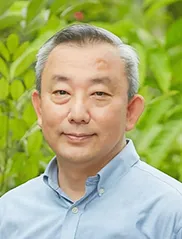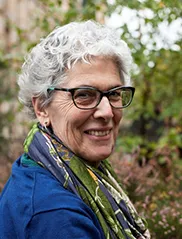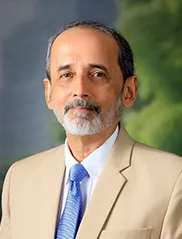
Keynote & Plenary Speakers
Click on the profile photos of each speakers to find out more about their Biographies and Abstracts!

Professor Tan Puay Yok
Director, Singapore Botanic Gardens, National Parks Board, Singapore
Professor, Department of Architecture, National University of Singapore

Professor Stephen Blackmore CBE FRSE RSB FLS
Chairman, Botanic Gardens Conservation International, UK

Professor Hai Ren
Director and Professor, South China Botanical Garden, Chinese Academy of Sciences

Professor Tan Puay Yok
Director, Singapore Botanic Gardens, National Parks Board, Singapore
Professor, Department of Architecture, National University of Singapore
Biography
Prof. Tan Puay Yok is the Director of the Singapore Botanic Gardens (https://www.nparks.gov.sg/sbg). The Singapore Botanic Gardens is a leading institute in tropical botany and horticulture and, over its 164-year history, has played a key role in the social, economic, and environmental history of Singapore and the region. It is one of only three botanic gardens in the world that is inscribed as a UNESCO World Heritage site. He also serves as the Chief Science and Technology Officer for the National Parks Board (https://www.nparks.gov.sg/), the national agency responsible for greenery, ecology, and conservation matters in Singapore.
He is concurrently the Dean’s Chair Professor and cluster leader of the Landscape Studies group at the Department of Architecture, National University of Singapore. His academic training was in horticulture science and plant physiology, and his research, teaching, and professional activities now focus on the science, policies, and practices of urban greening and the ecology of the built environment. He combines his background in the sciences, experience in urban governance from the public sector, and interactions with practitioners to apply knowledge for urban greening to improve environmental quality and societal well-being. He leads the Urban Ecology Lab at the Department of Architecture. He is the Co-Editor-in-Chief for Landscape and Urban Planning (Elsevier), Associate Editor for the Journal of Urban Ecology (Oxford University Press), and Editorial Board Member of npj Urban Sustainability (Nature Partner Journals).
Abstract
Transforming Singapore into a City in Nature
Keywords: City in Nature, urban planning, liveability, resilience
As a small city-state with no hinterland, Singapore faces intense land-use challenges as we strive to balance the many needs of a country, entirely within the limits of our city. In the face of continued urbanisation and climate change, innovative ways are required to meet our many land use needs while ensuring our city remains liveable and sustainable. Weaving greenery and nature into our city, through careful stewardship of our land and environment are core and long-held principles that we have adopted in our long-term planning approach.
In seeking to strengthen Singapore’s climate, ecological, and social resilience, the City in Nature vision builds on the greening efforts that Singapore has undertaken over the past decades to restore and further integrate nature into the urban ecosystem. This requires an even more multi-disciplinary approach that encapsulates the science of landscape ecology, conservation biology, veterinary science, arboriculture, horticulture, and socio-ecology. Science and technology underpin these efforts. This presentation will outline the key strategies undertaken to safeguard and extend Singapore’s natural capital island-wide, to ensure a green, liveable and sustainable home as part of our next round of urban planning. It will also highlight the important roles the Singapore Botanic Gardens plays to support this vision.

Professor Stephen Blackmore CBE FRSE RSB FLS
Chairman, Botanic Gardens Conservation International, UK
Biography
Stephen Blackmore has been fascinated by plants since an early age and had his first experiences of subtropical flora as a schoolboy in Hong Kong in the 1960s. He studied botany at the University of Reading, specialising in palynology and systematics, before working at the Aldabra Research Station in the Seychelles and at the University of Malawi. He joined the Botany Department of the Natural History Museum, London, in 1980 becoming Keeper of Botany in 1990. While at the Museum he visited Honduras, collecting herbarium specimens, and subsequently helped establish the Las Cuevas Research Station in Belize. In 1999 he moved to the Royal Botanic Garden Edinburgh (RBGE) as Regius Keeper. While working at RBGE he made numerous visits to China, working closely with botanic gardens there and, with colleagues from the CAS Kunming Institute of Botany, helped to develop the Jade Dragon Field Station and Lijiang Alpine Botanic Garden. For six years after leaving RBGE in 2013 he chaired the UK Government’s Darwin Initiative, supporting biodiversity projects around the world. Since 2013 he has Chaired the Board of Botanic Gardens Conservation International (BGCI). Steve is deeply committed to plant conservation and believes passionately in the power of botanic gardens to shape a better future for all life on Earth.
Abstract
Continuity and change – Singapore, biodiversity and BGCI
Anthropocene, Global Biodiversity Framework, Singapore, BGCI
It is in our nature to wish for continuity and stability in the world around us, yet we are living though a time of unprecedented change in the global environment. For botanic gardens the great challenge of our times is to work together to secure the future of plant diversity - our life support system. Achieving the Global Biodiversity Framework’s goal of a shared future for all life on Earth requires us to conserve plant biodiversity at every level, from ecosystems, to species and genetic diversity. This mission includes the diversity of cultivated plants including those of agricultural, horticultural or cultural significance. I will explore these issues through personal reflections on Singapore, biodiversity, and Botanic Gardens Conservation International (BGCI). Singapore has changed beyond measure since I first visited over 60 years ago thanks to the vision of designing a city in nature and numerous other responses to the environmental challenges of the future. Many lessons can be taken from the strategic sense of purpose at work in Singapore. The adoption of the Global Biodiversity Framework should further inspire us to take these lessons, together with positive experiences of conservation and restoration built up by botanic gardens around the world, and envision designing a planet in nature.

Professor Hai Ren
Director and Professor, South China Botanical Garden, Chinese Academy of Sciences
Biography
Prof. Hai Ren is primarily engaged in the research of vegetation restoration and conservation of rare and endangered plants. He has discovered the mechanism of recruitment limitation of native tree species under typical plantations in the lower subtropics, as well as the countermeasures for the use of nursing plants. By integrating biotechnology and ecological restoration techniques, he has successfully reintroduced 36 rare and endangered plants. He has authored three monographs, including "Introduction to Restoration Ecology" (Science Press, 2001, 2008, 2019, Chinese version), "Conservation and Reintroduction of Rare and Endangered Plants in China" (Springer, 2020), and "Plantations: Biodiversity, Carbon Sequestration, and Restoration" (Nova Science Publisher Inc., 2013), and has published more than 300 papers (including over 160 SCI papers). He serves on the editorial boards of 8 journals, including the Journal of Biodiversity and Endangered Species, Chinese Journal of Plant Ecology, and Acta Ecologica Sinica. He also serves as the vice president of the Ecological Society of China and is a member of the Board of Botanic Gardens Conservation International.
Abstract
In situ and ex situ conservation of plant diversity in China
botanical garden, nature reserve, threatened plant species, reintroduction
There are currently 36,152 species of higher plants in China, and about 15% of them are threatened due to natural and human disturbance. There are a total of 28,385 species of higher plants growing in China's 11,800 nature protected areas, accounting for 77.0% of the total number of higher plants in the country. There are 162 botanical gardens in China, which have 22,104 ex situ cultivated species, accounting for 65% of all plant species. About 1,500 threatened plants have been cultivated in botanical gardens, accounting for 39% of the total number of threatened plants. China has reintroduced a total of 206 plant species. Currently, about 10% of threatened plant species have not been protected both in situ and ex situ. In order to complete the Kunming Montreal Global Biodiversity Framework, China has formulated a China Action Plan based on the Global Strategy for Plant Conservation (2023-2030), which aims to protect, restore, and sustainably utilise plant diversity. China will form a transformative national action plan for biodiversity conservation in mainstream, realisation path, protection and development mode, universal protection action, and other aspects so as to realise the ideal state of "harmony between man and nature" for biodiversity conservation.

Dr Sandra Knapp OBE FRS FLS
Merit Researcher, Natural History Museum, UK
Biography
Sandy Knapp is botanist who is a specialist on the taxonomy and evolution of the nightshade family, Solanaceae, and she has spent much time in the field collecting plants, mostly in South America. Her work in Solanaceae spans various aspects of biodiversity, ranging from taxonomy to phylogenetics and evolution, with a focus on the wild relatives of important crops like tomatoes, potatoes and eggplants. Her current work includes a worldwide monograph of the genus Solanum, and the species of Lycianthes from New Guinea. She is the author of more than 200 peer-reviewed scientific papers and several popular books on the history of science and botanical exploration, including the award-winning Potted Histories (2004), and more recently Extraordinary Orchids (2021). She is actively involved in promoting the role of taxonomy and the importance of science for conservation and sustainable development worldwide. Sandy served as the President of the Linnean Society of London from 2018 to 2022. She has received numerous awards for her work in outreach (Peter Raven Outreach Award by the American Society of Plant Taxonomists), biodiversity conservation (UK National Biodiversity Network’s John Burnett Medal), and botanical science (Rolf Dahlgren Prize, David Fairchild Medal); she holds honorary professorships at University College London and Stockholm University. She has been elected to the American Academy of Arts and Sciences, the Academia Nacional de Ciencias of Argentina, Academia Europeana, and is a Fellow of the Royal Society.
Abstract
Putting plants at the centre: Collaboration and connectivity for a green future
collaboration, communities, botany, science, floristics, taxonomy, evolution
Plants are central to life on Earth. They provide the rest of nature with oxygen, a framework in which to live, as well as commodities such as food, fuel and beauty. Plants are of course central to botanic gardens too; they are the currency of institutions whose mission is the conserve and protect them. But neither plants nor the institutions nor the individuals that study and care for them can exist alone, today’s science and conservation depend upon connectivity. Even more than that, such endeavour depends on collaboration, with partners each contributing to a greater whole. It might seem that collaboration and connectivity are characteristically human – to be sure, that is true – but plants too must be brought into the equation. We need plants, but they also need us in many ways. I will draw on my experiences working with plants and with other humans from a wide range of scientific communities to explore how as botanists dedicated to protecting and enhancing plant diversity, we can use today’s opportunities for collaboration and connectivity to work better together. Working together will achieve more for plants, but also increase the diversity and inclusivity of our own communities. Our human relationship with plants is deep and complex – but what should it be in the future? Should we confine plant species to wild areas where we can see them, but not interact or use them? Or should we manage plant diversity strictly for human use and enjoyment by bringing more plants into cultivation and into close relationships with us? Or perhaps something in between? I will argue that to really put plants at the centre and to create a society in harmony with nature we must all must work together to maintain these relationships now and for future generations.

Rohan Pethiyagoda
Research Associate, Australian Museum
Managing Trustee, Wildlife Heritage Trust of Sri Lanka
Biography
Rohan Pethiyagoda is a Sri Lankan scientist engaged in biodiversity exploration (especially amphibians and freshwater fishes) and environmental advocacy. The tropical montane rainforest restoration project he established at Agrapatana in the Sri Lankan highlands led to him winning a Rolex Award for Enterprise. The Wildlife Heritage Trust, which he endowed in 1990, was responsible for the discovery of hundreds of new species of animals in Sri Lanka as well as the publication of a journal and several dozen books. Educated at King’s College, London, and the University of Sussex, he abandoned his career as a biomedical engineer to take up vertebrate taxonomy as an autodidact. His research output includes more than 60 papers and six books on fishes, amphibians, primates, biogeography, and the history of natural history. He has served in senior roles as a public servant in Sri Lanka, including as Environment Adviser to the government. He is a fellow of the National Academy of Sciences of Sri Lanka and has served as deputy chair of the IUCN Species Survival Commission and as a trustee of the International Trust for Zoological Nomenclature. He is an editor of Zootaxa and divides his time between Sri Lanka and Australia, where he is a research associate at the Australian Museum. Eponymous taxa referencing him include the fish genus Rohanella, the frog genus Rohanixalus, the jumping spider Onomastus pethiyagodai, the dragonfly Macromidia donaldi pethiyagodai, the fish Dawkinsia rohani and the frog Uperodon rohani. He was awarded the Linnean Medal for Zoology in 2022.
Abstract

Leonard Ng
Country Market Director, APAC, Henning Larsen, Singapore
Biography
Leonard joined Henning Larsen (formerly Atelier Dreiseitl) in 2008, where he co-spearheaded the establishment of the Singapore office and was subsequently appointed Partner in 2016. In 2023, he was conferred the President’s Design Award for Designer of the Year, the highest honour across all design disciplines in Singapore.
Leonard’s academic background and design interests lie at the juncture between man and his environment with the aim of finding a long-term sustainable balance between them. His approach involves extensive collaboration with diverse professions to foment holistic landscape-based solutions that engage and educate users while respecting the environment. His recent works feature designs that integrate the water found on-site with the surrounding urban development in a sensitive manner and have won awards at eminent international events such as the World Architecture Festival and President’s Design Award.
Abstract
Acting on the biodiversity crisis: planting strategies to maximise species diversity
urban greenery, landscape planning, eco-sensitive design
Biodiversity is experiencing an unprecedented decline, accelerated by human activities such as the introduction of foreign and invasive species, which devastate local ecosystems. Native plant species, which provide food and habitats for wildlife while supporting intricate relationships that sustain ecosystem health, are under severe threat. This talk will examine case studies of design applications that facilitate regeneration in landscapes and plant species conservation such as: Rifle Range Nature Park (planting strategy implemented for habitat creation and transition to primary forest); National Orchid Garden (conserving native orchid species and fostering public appreciation through the optimisation of the user journey); Jurong Lake Gardens (creating and restoring ecotones for biodiverse habitats).

Amy Padolf
Director of Education, Fairchild Tropical Botanic Garden, USA
Biography
Amy Padolf is the Director of Education at Fairchild Tropical Botanic Garden in Miami, Florida. During her 15-year tenure, she has played a pivotal role in spearheading, coordinating, and securing funding for innovative plant science education initiatives on a national and international scale. Over nearly three decades, Ms Padolf has been a driving force behind the creation of pioneering science education programmes that seamlessly connect the realms of research and education within both formal and informal educational contexts. She holds a BS in Rhetoric and an MS in Science Education and is pursuing a Ph.D. in Education Research. Her most recent accomplishments include establishing the nation’s first botany magnet elementary and high schools; partnering with NASA to create Growing Beyond Earth®, an international citizen science project to support indoor agriculture in space and on Earth; and creating the first makerspace in a botanic garden to address the technology of food production.
Abstract
Cultivating change: Interdisciplinary approaches to amplify botanic gardens’ influence
collaboration, science communication, impact
Botanic gardens stand at a pivotal intersection where science, education, and public engagement converge, positioning us as indispensable catalysts for driving meaningful change. As custodians of important collections of plant biodiversity and cutting-edge botanical research, botanic gardens bear a profound responsibility to harness the power of education to further our scientific pursuits and amplify our outreach endeavours. Rather than operating within traditional disciplinary siloes, we must establish collaborative pathways that bring together our diverse efforts across conventional boundaries. By cultivating interdisciplinary approaches that integrate our research programs, educational offerings, and public engagement strategies, we can unlock innovative ways to share our work that have far-reaching positive impacts. The key lies in transforming how we communicate science to diverse audiences. Effective collaborative communication strategies allow us to bridge the divide between specialised scientific knowledge and public understanding. During this session, Amy will share insights from successes, failures, challenges, opportunities, and research, underscoring the immense value of adopting collaborative communication strategies that allow botanic gardens to achieve our collective goals.

Hwang Yu-Ning
Chief Executive Officer, National Parks Board, Singapore
Biography
Ms Hwang is CEO of the National Parks Board. She has over 20 years of experience in public service including with the Urban Redevelopment Authority as Singapore's Chief Planner and stints in the Strategy Group of the Prime Minister's Office and the Ministry of National Development. She is a board member of the Land Transport Authority, the Science Centre Board, Gardens by the Bay and IJ Board of Management. She currently serves on the Scientific Advisory Committee of the Singapore-ETH Centre's Future Cities Lab Global Research Programme and the Asia-Pacific Executive Committee of the Urban Land Institute.
Abstract
Transforming Singapore into a City in Nature
City in Nature, urban planning, liveability, resilience
As a small city-state with no hinterland, Singapore faces intense land-use challenges as we strive to balance the many needs of a country, entirely within the limits of our city. In the face of continued urbanisation and climate change, innovative ways are required to meet our many land use needs while ensuring our city remains liveable and sustainable. Weaving greenery and nature into our city, through careful stewardship of our land and environment are core and long-held principles that we have adopted in our long-term planning approach.
In seeking to strengthen Singapore’s climate, ecological, and social resilience, the City in Nature vision builds on the greening efforts that Singapore has undertaken over the past decades to restore and further integrate nature into the urban ecosystem. This requires an even more multi-disciplinary approach that encapsulates the science of landscape ecology, conservation biology, veterinary science, arboriculture, horticulture, and socio-ecology. Science and technology underpin these efforts. This presentation will outline the key strategies undertaken to safeguard and extend Singapore’s natural capital island-wide, to ensure a green, liveable and sustainable home as part of our next round of urban planning. It will also highlight the important roles the Singapore Botanic Gardens plays to support this vision.
